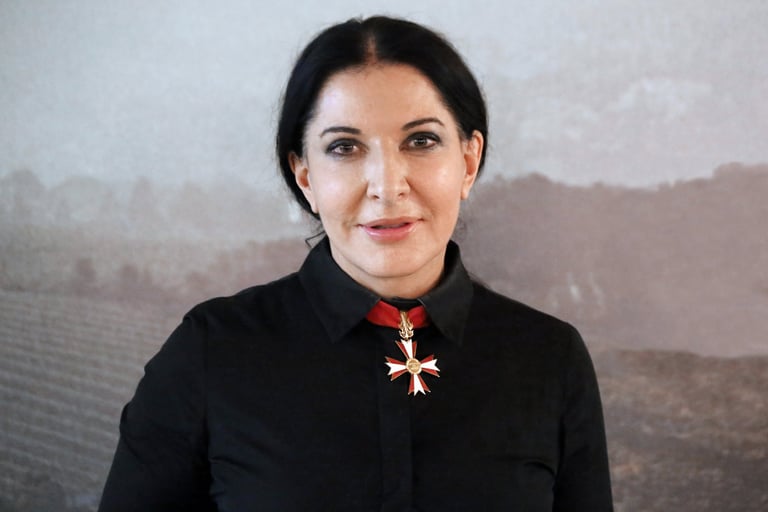Rhythm 0: The Dark Truth of Human Nature
A silent figure stood before them, the choice in their hands. What followed was a revelation of human nature—raw, unfiltered, and unforgettable. Step into the unsettling world of Rhythm 0 and confront the question: When given power, do we create or destroy?
MINDMUSE
In 1974, Marina Abramović staged one of the most shocking and revealing performance art pieces in history—Rhythm 0. This six-hour endurance test was more than just an experiment in artistic expression; it became a chilling psychological and social study, exposing the unsettling depths of human behaviour when power is left unchecked.
Marina Abramović, born in 1946 in Belgrade, Yugoslavia (now Serbia), grew up in a country still healing from the scars of World War II. She emerged as a leading figure in conceptual and performance art, a genre where the artist’s own body serves as both medium and message—pushing physical, mental, and emotional boundaries to provoke deeper reflection.
Her work often explored themes of pain, endurance, and control. In Rhythm 5, she created a massive burning star—symbolising both Communism and sacrifice—and lay at its centre until the smoke caused her to lose consciousness. In Rhythm 10, she played a dangerous knife game, stabbing the spaces between her fingers, and each time she cut herself, she switched to a new blade, ritualising both pain and repetition. However, Rhythm 0 took this concept further—not by testing her own endurance, but by surrendering herself entirely to the will of others. This time, the pain would not come from her own hand but from those around her, exposing how people behave when given absolute control.
On a quiet day in 1974, inside a Naples art studio, Abramović stood motionless for six hours beside a table holding 72 objects, ranging from gentle (a rose, grapes, a feather, perfume) to violent (scissors, a scalpel, a whip, a gun with a single bullet). She gave the audience complete freedom, stating:
"I am the object. During this period, I take full responsibility."
By making herself a passive figure, she tested the limits of the audience’s morality. The question was simple: How would they choose to interact with a person who would not resist?
At first, the audience approached the situation tentatively. Some offered her flowers, placed a kiss on her cheek, or observed her curiously. There was a sense of care, even amusement, as people explored the novelty of a human being turned into a living canvas.
As time passed, hesitation faded. Someone cut her clothes with scissors, exposing her body. Others used lipstick to write degrading messages on her skin. A few pricked her with thorns, testing if she would flinch.
By the third hour, the mood shifted entirely.
Blades were used to cut her skin, leaving her bleeding.
Some participants drank her blood.
She was groped and touched inappropriately.
A gun was loaded, placed in her hand, and aimed at her head by one man, his finger guiding hers toward the trigger. Another participant intervened, removing the weapon.
Through it all, Abramović remained motionless, enduring whatever was done to her.
After six hours, the performance ended. Abramović began to move—taking back control of her body.
The reaction was immediate: the same audience that had tormented her fled the room, unwilling to face her as a person. The moment she ceased being an object, their behaviour became inescapably real.
Years later, reflecting on the performance, Abramović remarked:
"The experience I drew from this work was that in your own performances you can go very far, but if you leave decisions to the public, you can be killed."


Marina Abramović: Redefining the Limits of Art and Endurance. (Courtesy: Wikipedia)
What Rhythm 0 Reveals About Human Nature
1. The Thin Line Between Civility and Cruelty
The performance demonstrated that violence is not always external—it can emerge from ordinary people when social restraints disappear. At first, many were kind, but as the hours passed, they fed off one another’s actions, escalating their cruelty.
2. Power Without Consequence Leads to Corruption
The audience members knew they would face no repercussions, making it easier to justify their behaviour. It was an experiment in unchecked power—and the results were disturbing.
3. The Bystander Effect and Herd Mentality
Some audience members inflicted harm, but many others watched in silence, complicit in their inaction. This reflects the bystander effect, where people avoid intervening in dangerous situations, assuming others will act.
4. The Illusion of Consent
Abramović had given permission for anything to happen, yet it did not protect her from being harmed. The performance raised profound questions about the nature of consent—does agreement justify exploitation? Is silence truly consent?
Lessons from Rhythm 0: A Reflection on Society
Human behaviour is shaped by environment and opportunity. Given power without accountability, even ordinary people can become perpetrators.
Silence enables violence. Those who do not act against wrongdoing are just as responsible as those who commit it.
Consent does not mean invulnerability. Just because someone allows something does not mean it is ethical to act upon it.
Art can be a reflection of reality’s darkest truths. Rhythm 0 was more than performance—it was a test of humanity, and the results were chilling.
Final Thought: What Would You Have Done?
The audience was given two choices: kindness or cruelty
Many chose cruelty.
If you had been in that room, standing before a silent, motionless figure, what would you have done?
This is the question Rhythm 0 leaves us with—and perhaps, that is its greatest power.
